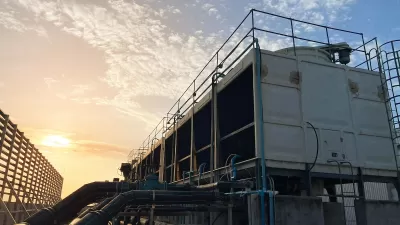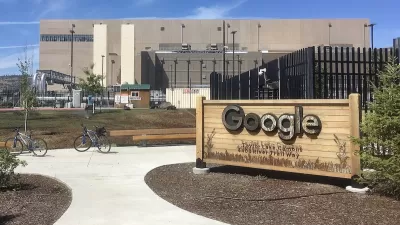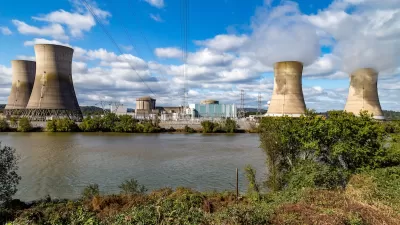A watchdog group is questioning whether the benefits of data centers outweigh their negative impacts on the local economy and power grid.

Watchdog group Policy Matters Ohio is raising some key concerns about the proliferation of data centers in the state, including “whether the state is giving up too much in tax revenue for the number of jobs they’ll create, who will pay to add electricity generation to meet the centers’ surging demand, and whether the new demand will force fossil-fuel burning generators to stay online, making the world’s climate crisis worse.”
As Marty Schladen explains in the Ohio Capital Journal, the group says the state’s tax exemptions subsidize some of the world’s largest corporations at the expense of its residents. “The investments the companies are making might sound huge, but exemptions already granted to Google and Facebook owner Meta cost Ohio an estimated $1 million per job created, the analysis said.” Even so, research shows that tax incentives are only the deciding factor in a small number of decisions about data center locations.
Data centers require massive amounts of electricity, raising questions about the state’s capacity to support them while maintaining a reliable supply for other needs.
FULL STORY: Serious concerns raised over proliferation of Ohio data centers

Manufactured Crisis: Losing the Nation’s Largest Source of Unsubsidized Affordable Housing
Manufactured housing communities have long been an affordable housing option for millions of people living in the U.S., but that affordability is disappearing rapidly. How did we get here?

Americans May Be Stuck — But Why?
Americans are moving a lot less than they once did, and that is a problem. While Yoni Applebaum, in his highly-publicized article Stuck, gets the reasons badly wrong, it's still important to ask: why are we moving so much less than before?

Using Old Oil and Gas Wells for Green Energy Storage
Penn State researchers have found that repurposing abandoned oil and gas wells for geothermal-assisted compressed-air energy storage can boost efficiency, reduce environmental risks, and support clean energy and job transitions.

Updating LA’s Tree Rules Could Bring More Shade to Underserved Neighborhoods
A new USC study finds that relaxing Los Angeles’ outdated tree planting guidelines could significantly expand urban tree canopy and reduce shade disparities in lower-income neighborhoods, though infrastructure investments are also needed.

California's Canal Solar Projects Aim to Conserve Resources and Expand Clean Energy
California’s Project Nexus has begun generating electricity from solar panels installed over irrigation canals, with researchers and state agencies exploring statewide expansion to conserve water and boost clean energy production.

HHS Staff Cuts Gut Energy Assistance Program
The full staff of a federal program that distributes heating and cooling assistance for low-income families was laid off, jeopardizing the program’s operations.
Urban Design for Planners 1: Software Tools
This six-course series explores essential urban design concepts using open source software and equips planners with the tools they need to participate fully in the urban design process.
Planning for Universal Design
Learn the tools for implementing Universal Design in planning regulations.
Heyer Gruel & Associates PA
City of Moreno Valley
Institute for Housing and Urban Development Studies (IHS)
City of Grandview
Harvard GSD Executive Education
Salt Lake City
NYU Wagner Graduate School of Public Service
City of Cambridge, Maryland





























